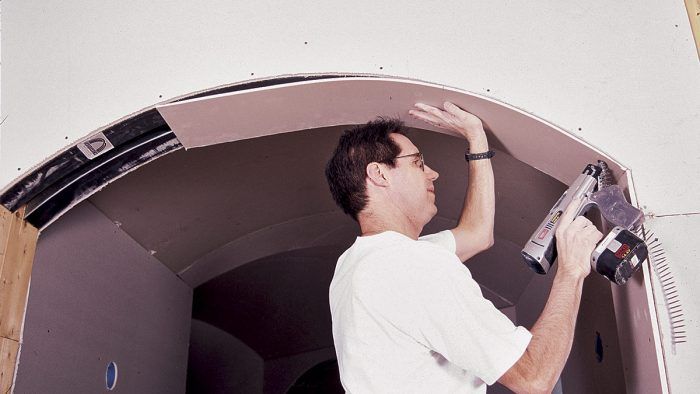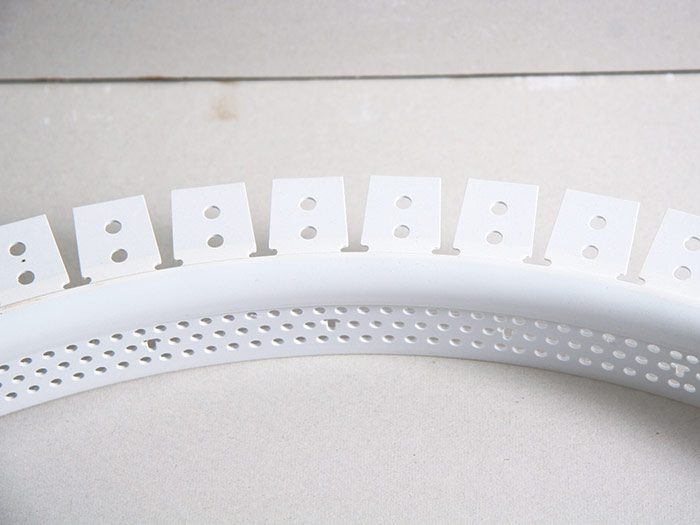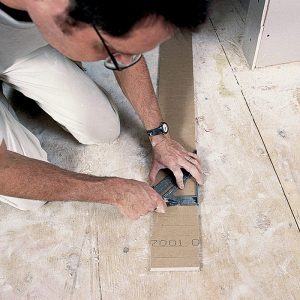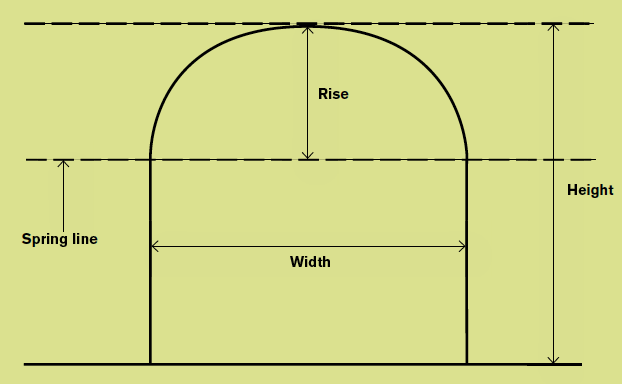
As with curved walls, 1/4-in. flexible drywall works best for short-radius archways (on gentler arches, use regular 1/4-in. or 1/2-in. drywall). Cut the drywall to the desired width and approximate length. You can either start at the center and work toward the edges, or start at the spring line.
If you don’t want to buy a whole sheet of 1/4-in. flexible drywall just to do one archway, you can use 1/2-in. regular drywall instead. In this case, score the back paper of the drywall strip at 1-in. intervals (or closer, if the curve is tight). As the strip is fastened into place around the arch, the back will separate at the cuts, allowing the drywall to conform to the shape of the curve. After the drywall has been attached to all sides of the archway, fasten corner bead to the outside edges.
There are a number of beads made specifically for arches. Most beads are available in square-edge and bullnose configurations. There is even an archway bead that comes in a 100-ft. roll; some are vinyl, others are made of a flexible PVC product, and others are paper-coated vinyl. All of these archway beads have one thing in common: They are precut at 1-in. intervals along one side, so that they can flex to fit the outside curve of the arch. Start at one end of the archway, fastening the bead as you go and keeping it snug against the wall and curved surface.

Once the corner bead has been fastened to the archway, attach a rigid, matching corner bead to the vertical sides of the opening. Make sure the surfaces are flush and fit together evenly where the two corner beads butt together. Apply joint compound to the corner bead on the archway in the same manner as that for any corner bead. For an arch that looks nice and even, make sure the spring lines are the same height.
| WORK SMART: If you’re using 1/4-in. drywall on the inside of an archway, you may need two layers to blend in the sides and provide added strength. |
Arches: Why choose one shape over another?Any arch can look good in the right setting—just remember, the shape you choose will greatly affect the spring lines. An Elliptical Arch can have the same spring line, rise, and finished opening height no matter how wide the finished opening. These consistent measurements, no matter the width, guarantee a consistent and attractive-looking opening. Because Round-Top Arches are made from a single radius measurement, the rise varies as the finished opening width varies. It is not possible to have the same spring lines and finished opening heights with round top arches of different widths. Segment Arch Just like ellipses, segment arches can have the same spring line and rise no matter what their width. Segments are good to use when a wide finished opening is desired, but the ceiling is too low for an elliptical or a round top. |








